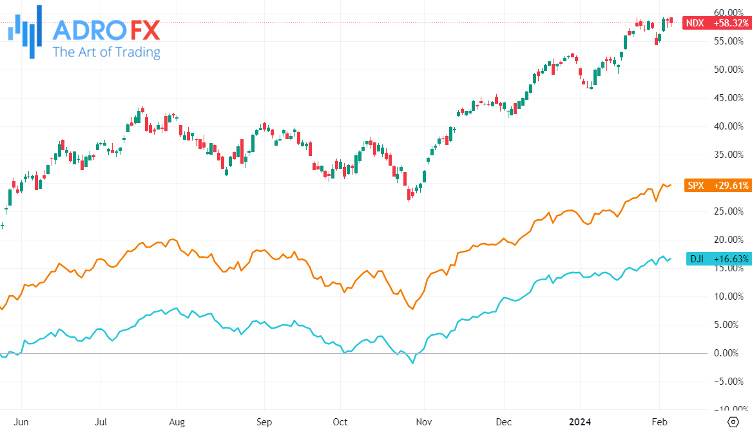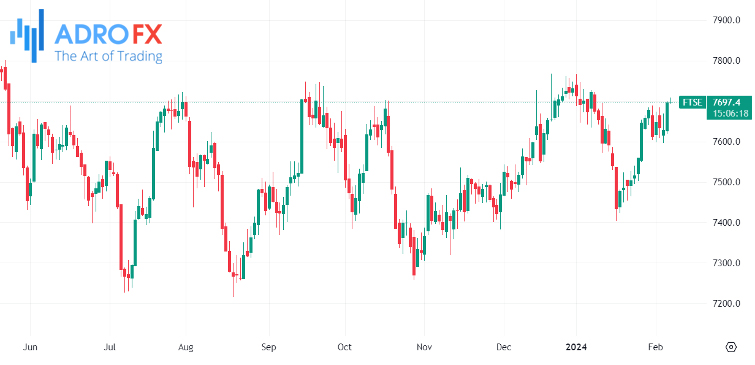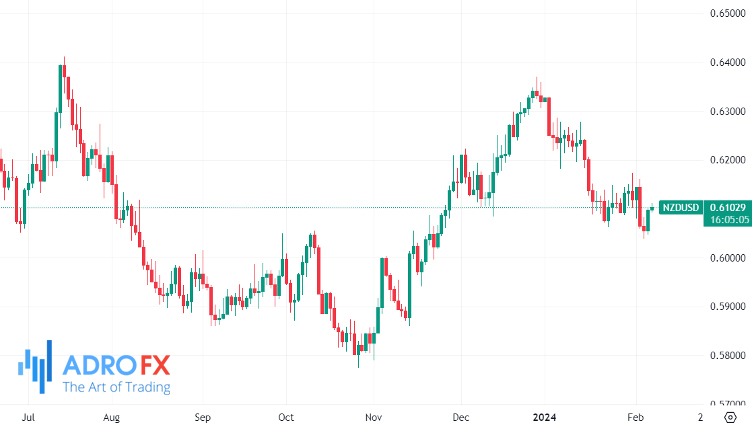S&P 500 Bounces Back, European Markets Optimistic, and Currencies Navigate Volatility | Daily Market Analysis

Key events:
- USA - Trade Balance (Dec)
- USA - Crude Oil Inventories
- USA - 10-Year Note Auction
- USA - FOMC Member Bowman Speaks
The S&P 500 made a late recovery from the day's lows as it resumed its journey toward record highs, overcoming a recent setback. The rally, which broadened due to stronger corporate earnings, helped cushion the impact of weakness in tech stocks led by chip-related concerns.
Closing at 4,954.24, the benchmark S&P 500 gained 0.1%, coming close to its previous record close of 4,958.61 on Feb. 2. The Nasdaq Composite, dominated by tech stocks, also rose by 0.1%, while the Dow Jones Industrial Average climbed 0.1%, equivalent to a 141-point increase.

Federal Reserve officials reiterated their stance that there is no hurry to cut rates, emphasizing the ongoing efforts to control inflation and bring it in line with the 2% target. Minneapolis Fed President Neel Kashkari noted that recent inflation data, whether considered on a six-month or three-month basis, indicates that inflation is "basically" at the target, but he cautioned that it hasn't fully reached the goal yet.
These comments followed remarks by Federal Reserve Bank of Cleveland President Loretta Mester, who suggested that a rate cut might be considered later in the year if inflation continues to cool. However, she emphasized there was "no rush" to implement such a move.
European markets experienced a more optimistic tone yesterday, buoyed by a slight decline in yields and a weakened US dollar. After four consecutive days of declines, the FTSE100 finally enjoyed a positive session, closing higher for the first time in five days, briefly reaching its highest level since January 11 before retracing.

The primary driver of the gains was the robust performance of oil giant BP, whose shares surged to their highest levels since November. The company announced underlying profits of $2.99 billion, surpassing expectations of $2.76 billion. Additionally, BP revealed a further buyback of $1.75 billion, bringing the total for the first half of the next year to $3.5 billion.
On the currency front, the US dollar remained under pressure, reversing from a nearly three-month high against the euro in the previous session. The decline in US bond yields contributed to the dollar's pullback, with technical factors cited by analysts. The dollar was relatively stable at $1.0755 per euro in early Asia trade, showing a 0.1% retreat from the previous day when it had briefly touched its strongest level since Nov. 14 at $1.0722.

The US dollar index, which had reached its highest level since Nov. 14 at 104.60 on Monday, remained flat at 104.14 after a 0.29% decline on Tuesday. This shift was attributed to the reversal in US Treasury yields, which decreased from overnight highs due to solid demand for the sale of new three-year notes, thereby reducing some of the support for the dollar.
NZD/USD pair continued its upward trajectory for the second consecutive day on Wednesday, recovering from its lowest level since November 23 earlier in the week. Currently trading around the 0.6100 round-figure mark, the pair is up just over 0.30% for the day. Support for the New Zealand Dollar comes from a positive surprise in the December quarter labor market report, indicating a solid 0.4% increase in employed individuals. The Unemployment Rate was lower than the anticipated 4.2%, as forecasted by the Reserve Bank of New Zealand. These factors, coupled with a modest decline in the US Dollar, act as tailwinds for the NZD/USD pair.

Contrastingly, the Japanese Yen struggles to capitalize on its overnight bounce against the US Dollar during the Asian session on Wednesday. Indecision among traders is evident due to mixed fundamental cues. Japan's real wages fell for the 21st consecutive month in December, and household spending declined for the tenth successive month, posing challenges for the Bank of Japan. While traders are cautious amid stable equity markets, concerns about geopolitical risks and slowing growth in China contribute to the JPY's status as a safe-haven currency.

Gold prices ended positively on Tuesday, breaking a two-day losing streak that brought it to a one-week low around the $2,015 region. However, the precious metal faces challenges in capitalizing on the momentum and is trading within a narrow range during the Asian session on Wednesday. Traders are adopting a wait-and-see approach for more cues about the likely pace of interest rate cuts by the Federal Reserve this year. The focus remains on the upcoming release of US consumer inflation figures next week.

Looking ahead, Wednesday's US economic docket includes the release of Trade Balance data, which is unlikely to provide significant impetus. Influential FOMC member speeches and movements in US bond yields during the North American session will likely drive USD demand. Additionally, the broader risk sentiment will play a role in shaping short-term trading opportunities around Gold prices.









